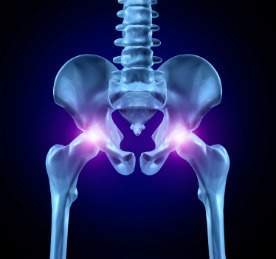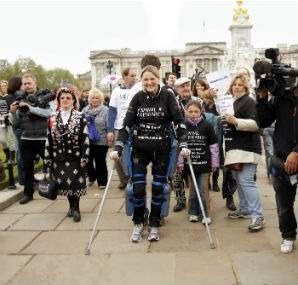
Sufferers of arthritis and other joint problems can experience debilitating pain attempting to do the most mundane of daily tasks. This is why the disease is such an isolating and troublesome condition, taking away much of the sufferer’s enjoyment of life while leaving them mostly unscathed on the outside.
One of the cruellest problems those with arthritis often face is that they cannot even open the medication needed to relieve the pain. Pill containers have long been a contentious issue for safety reasons: how do you make a product that can’t easily be opened by the idle thumbs of a child without alienating those who need it, but no longer have the mobility to manipulate tricky latches and catches?
Child-resistant (CR) packaging, as defined by the British Plastics Federation, is "packaging that is difficult for a child younger than 52 months to open (or gain access to the contents) in a reasonable period". The packaging, however, must not be difficult for an adult up to and including 70 years old to use properly. Unfortunately, this part of the equation is often seen as less important.
Age-old concern
There are many ideas for how to combat this problem, but one answer may lie in designing packaging with a very specific opening mechanism that relies less on being highly dexterous and more on simply knowing what to do. These solutions would be obvious for adults familiar with the product but sufficiently challenging for those who are younger. For example, there are packages specifically designed for pharmaceuticals with push points that, when pressed simultaneously, unlock the package but with a distance between the points that is too great for children’s hands to physically cover.
Children taking adult’s medication is a huge problem. In the US alone, more than 60,000 young children are treated in emergency rooms each year for accidental overdoses because they got into medicines when their parent or caregiver wasn’t looking.
This package would therefore solve two issues that have long dogged the industry: saving children from any potential accidents, and giving patients with reduced mobility the ability to access their medication without causing pain or undue stress.
Ron Linssen is the managing director of Ecobliss, a company that has a product design like this in the pipeline.
"Many new products on this theme are currently under development and will soon be visible in the market," he says. "All these new projects are driven by legislation. The moment it becomes mandatory to use CR packaging is the moment producers move to certified CR packaging solutions."
Linssen believes the product is different to other solutions already available because "it’s as simple as a regular carton", although manufacturers need to bear in mind that "the packaging needs to still offer space for communication, information and branding". He says solutions like this work because they protect the product well, are cost-effective, fit in perfectly in the logistics chain and are easy to automate on standard packaging equipment.
There is a large gap in the market for solutions to the problem. "In Europe, approximately 80% of all tablets and capsules entering the market are first packed in a blister strip and then in a retail carton," Linssen explains. "In the US, it is the other way around. Up until now, approximately 80% of all medicines have been packed in bottles. This is changing rapidly, however."
Linssen sees more gaps for innovative product design and a world of new opportunities thanks to changing regulatory pressures. "The US trend towards the increasing use of blisters is a fact. Since the invention of the carton, an essential element has changed – and that is the law."
"In 1970, the US enforced a new law, the Poison Prevention Packaging Act. It was the first country that recognised the importance of protecting young children from products that might harm them and took the appropriate action," he says. "From that point onwards, it became mandatory to package regulated products in CR packaging, and regular cartons are not child-resistant."
Open – for business
Linssen has come across many CR packaging solutions over the years but none that he feels offer a clear R&D route.
"Most of these packaging solutions had, in our opinion, a lot of disadvantages, either from a user point of view or from a production point of view. At some point, the idea came up to use the combination a carton and a thermoformed tray as key components as the starting point for the development of a CR carton."
Products like this must prove they are safe, and they require heavy government oversight in order to be deemed so. The law specifies that no more than 15.0% of children in a study should be able to open a package in the first five minutes for the product to pass. Just two of the 300 were able to open it in this test – a rate of 0.6%.
Linssen’s ideas for the future include further advances to make the packaging even safer, and he sees the whole industry as needing to wise up. "Annually, many young children suffer from the unintentional intake of hazardous products, and more countries are enforcing legislation to prevent such accidents from happening. It is therefore very important that the packaging industry continues to develop CR-certified packaging solutions to cater for this need."
The flip side of the coin for products like this, of course, is the ease of opening for the older section of the population. Products are often trialled on aspects like human factors, with seniors invited to try out the product and test their ability to open the packaging easily – with or without the use of any pictogram printed on the carton with instructions.
Older people’s ability to open medicine containers is impaired by several conditions affecting physical and cognitive functioning. Many elderly people who are unable to open containers do not receive help with their medication, especially those still living in their own homes. This means the product could become deadly in some cases, with the sufferer unable to take medication.
A Swedish study shows this is a lasting concern particularly for women, those of a higher age or living in an institution, and sufferers of Parkinson’s disease, rheumatoid arthritis, cognitive impairment or impaired vision. All these groups had significantly decreased ability to open the containers. Fewer than half of the elderly people who were unable to open one or more of the containers received help with their medication; among those living in their own homes, just 27% received help. Studies have also shown that, of these groups, 14% were unable to open a screw-cap bottle, 32% a bottle with a snap lid and 10% a blister pack.
"Professionals that deal with CR packaging know very well that treading the thin line between true senior-friendliness and passing the testing protocols with young children is the toughest packaging design job anyone can imagine," says Linssen.
What else is being done?
CR packaging has to meet stringent criteria, with different combinations depending on whether it’s manufactured and sold in North America or Europe, and the issue has been treated seriously for the past 40 years. Now, however, with such a large part of the population living alone and ageing rapidly, easy-access medication for the elderly is more important than ever before.
Some of the most common changes are indeed the most basic, which may help older consumers engage with packaging but doesn’t help with access problems: larger print, bolder colour schemes and pictographic representation on the labelling, for example.
Most in the industry agree that more must be done to come up with a broad solution for the elderly consumers who are unable to open bottles for pills, regardless of whether there are children around.
One trend that does offer hope, and is already being used for products aimed at elderly people in some areas, is a focus on using blister packaging that carries more prescribed labelling – directions might be printed in larger type on side panels, foldouts, or tags affixed to the necks of bottles and jars.
Another solution also uses blister packaging but in conjunction with a small lever with an easy-to-press grip that pops the medicine out from the pack. While this sounds like a good idea in theory, in practice they can be harder to use than first thought and are often shoddily made.
Human-factors packaging design has come on in leaps and bounds in recent years, but its application has not yet fully infiltrated the R&D workflow of basic medical product packaging. While it seems like many companies are trying to adjust their strategies to take into account the ageing population, as well as safety fears, it seems that few have discovered a way of incorporating the needs of both ends of the age spectrum. More must be done to ensure that a growing segment of the population isn’t left isolated and unable to take the very health remedies that are meant to help them.






